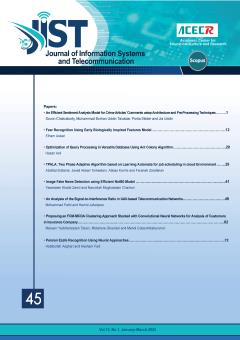In this paper, the specific trait of Persian signatures is applied to signature verification. Efficient features, which can discriminate among Persian signatures, are investigated in this approach. Persian signatures, in comparison with other languages signatures, have
More
In this paper, the specific trait of Persian signatures is applied to signature verification. Efficient features, which can discriminate among Persian signatures, are investigated in this approach. Persian signatures, in comparison with other languages signatures, have more curvature and end in a specific style. Usually, Persian signatures have special characteristics, in terms of speed, acceleration and pen pressure, during drawing curves. An experiment has been designed to determine the function indicating the most robust features of Persian signatures. Results obtained from this experiment are then used in feature extraction stage. To improve the performance of verification, a combination of shape based and dynamic extracted features is applied to Persian signature verification. To classify these signatures, Support Vector Machine (SVM) is applied. The proposed method is examined on two common Persian datasets, the new proposed Persian dataset in this paper (Noshirvani Dynamic Signature Dataset) and an international dataset (SVC2004). For three Persian datasets EER value are equal to 3, 3.93, 4.79, while for SVC2004 the EER value is 4.43.
Manuscript profile


